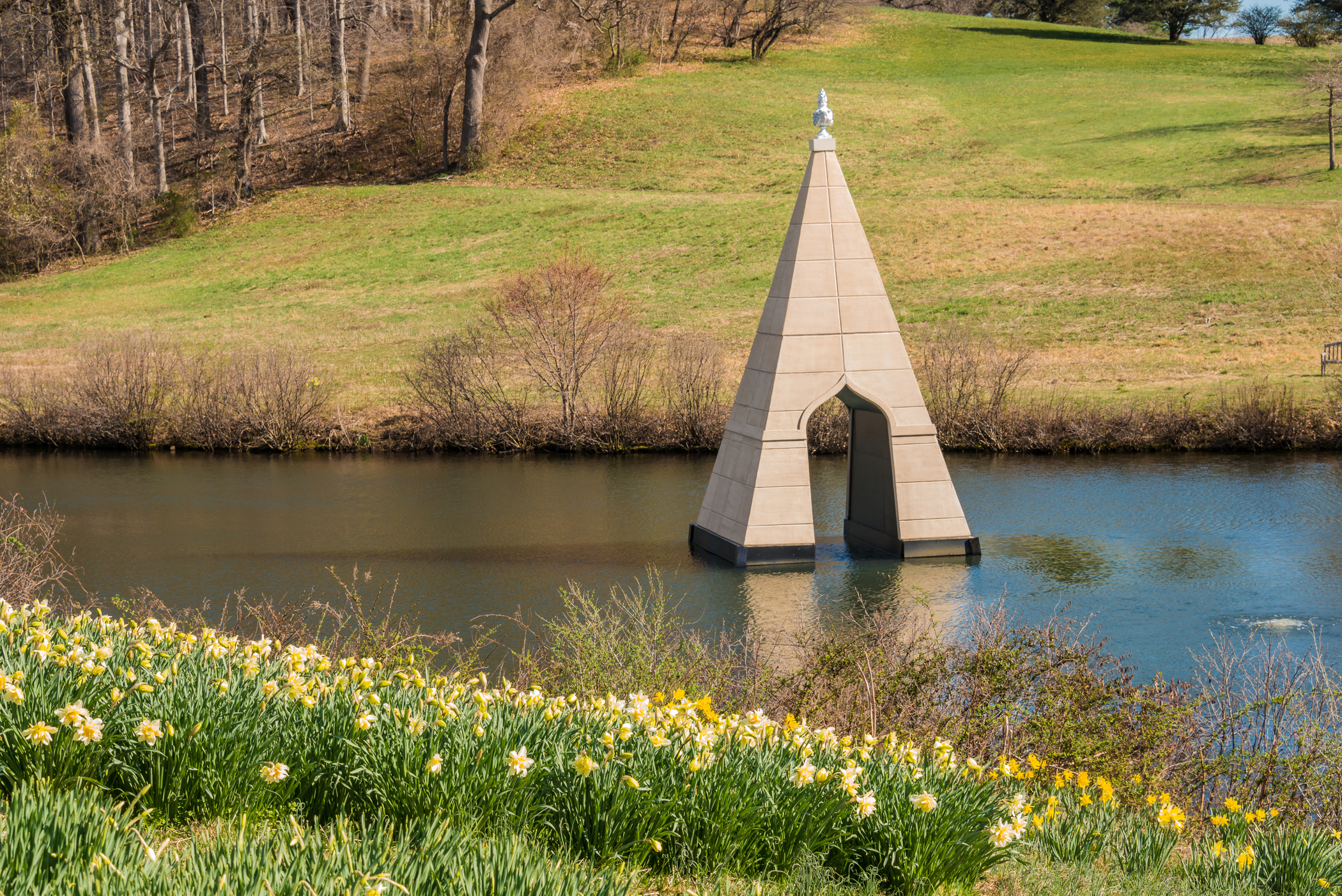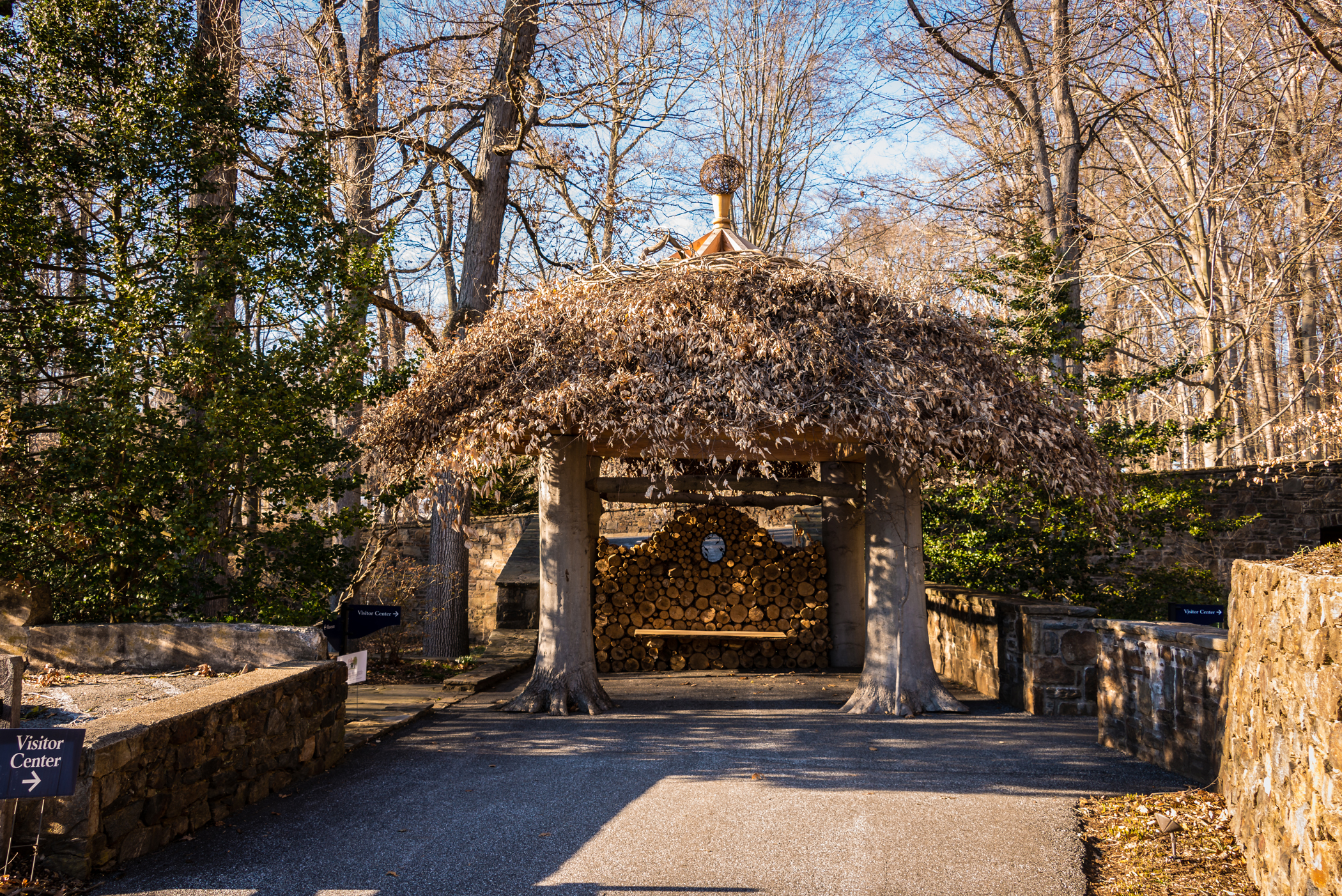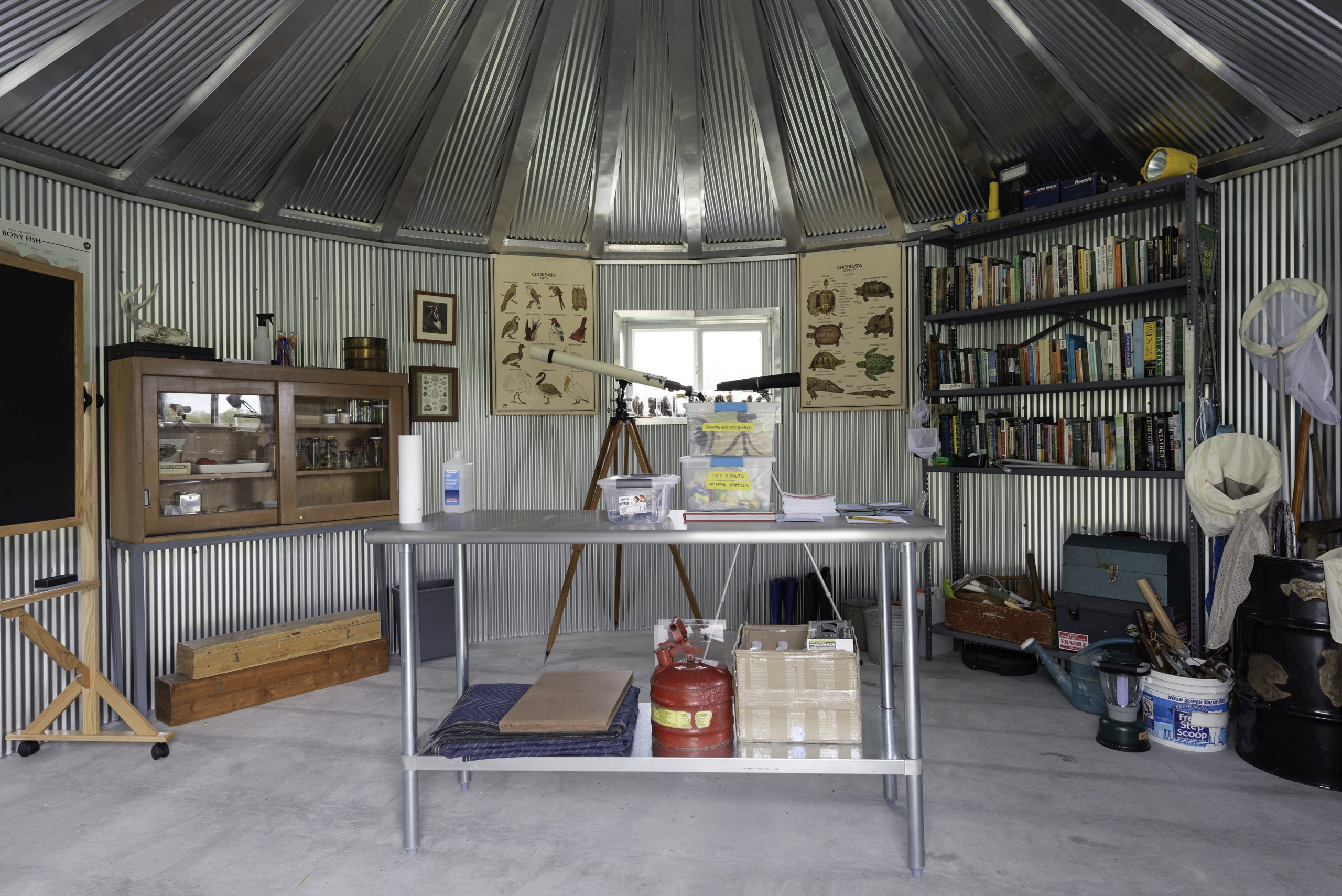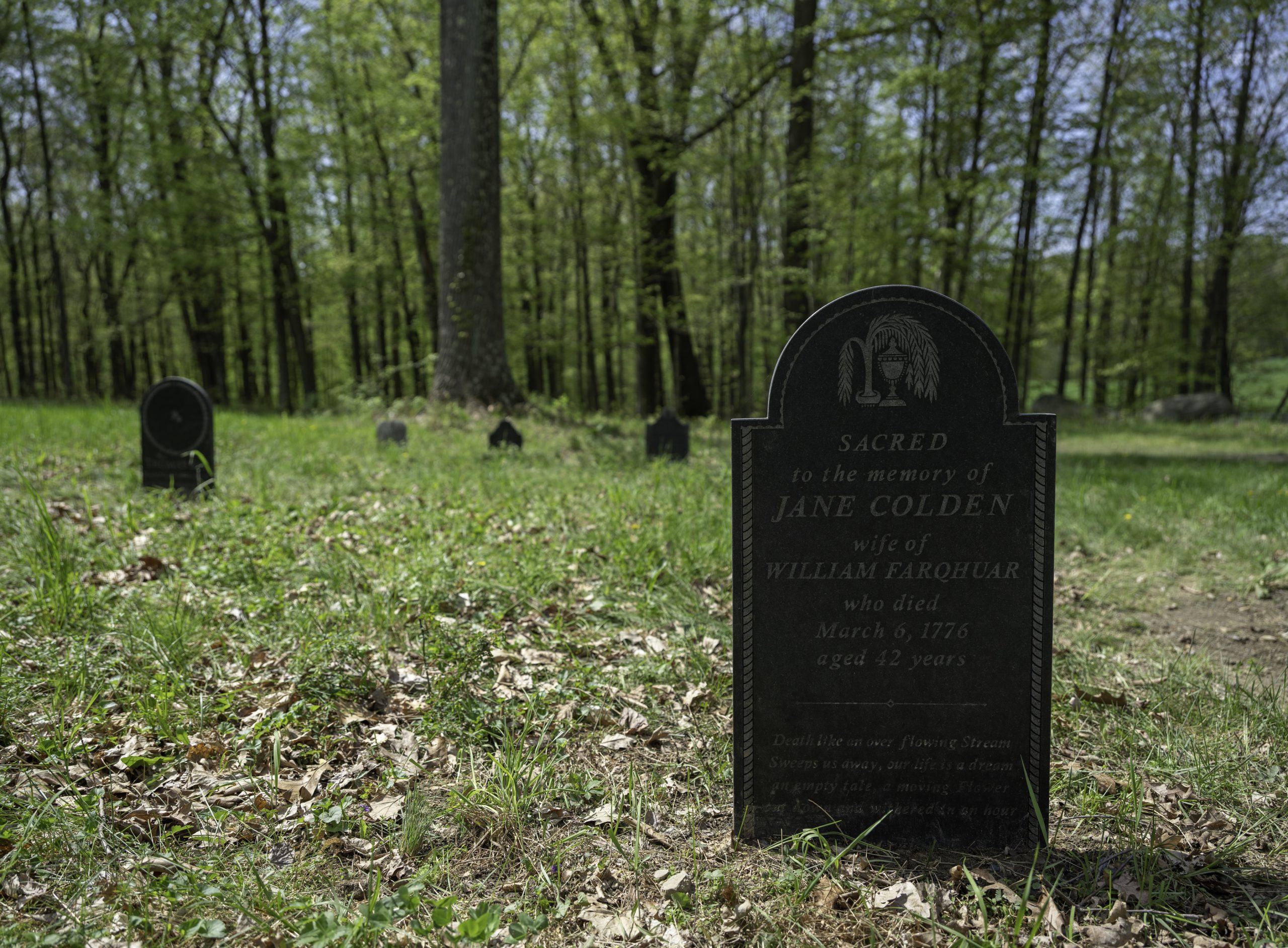Follies: Architectural Whimsy in the Garden and Mark Dion: Follies
Follies: Architectural Whimsy in the Garden
Curated by: Chris Strand and Carol Long
Exhibition schedule: Winterthur Museum, Garden and Library, Winterthur, DE, April 1, 2018–January 5, 2020
Mark Dion: Follies
Curated by: David R. Collens, Nora R. Lawrence, and Sarah Diver
Exhibition schedule: Storm King Art Center, New Windsor, NY, May 4–November 11, 2019
Exhibition catalogue: David R. Collens, Nora R. Lawrence, and Sarah Diver, with Sarina Basta, Mark Dion, Piper Faust, Nora R. Lawrence, Victoria Lichtendorf, Denise Markonish, Armelle Pradalier, Lauren Ross, Dana Sherwood, John P. Stern, Dana Turkovic, Mark Dion: Follies, exh. cat. New Windsor, NY: Storm King Art Center, 2019. 119 pp.; 66 color illus.; numbered limited-edition spiral-bound catalogue box set (box modeled after nineteenth-century cigar boxes, with a glass vial of natural materials from the grounds of Storm King Art Center). $40.00 (ISBN: 9780999118320)
Follies are having a moment right now. In 2019, two exhibitions on follies—Follies: Architectural Whimsy in the Garden and Mark Dion: Follies—occurred simultaneously. What are follies, and what explains this surge of interest? Follies are miniature, historicized buildings that ornament a landscape, providing respite and shade in a garden and provoking romantic reveries through association with buildings and events from the past. Picturesque follies in eighteenth-century English landscape gardens encouraged people to spend time outdoors and, as eye catchers and belvederes, they led viewers through the landscape. In the nineteenth century, landscapes with follies provided an escape from urban and industrial life, fulfilling the human need to connect with nature, a desire that continues to resonate with twenty-first-century audiences. Today, the popular interest in amateur photography and selfie culture has made follies a cultural and geographical backdrop for social media posts, at times referencing popular television shows such as Downton Abbey.
Follies: Architectural Whimsy in the Garden is the first exhibition to take place in the gardens at Winterthur, which is best known for its pre-twentieth-century decorative arts collection. Winterthur already had a collection of follies, thanks to its founder Henry Francis du Pont, who crafted the Winterthur landscape with architect Marian Coffin from 1902 to 1969. These existing follies include the Latimeria collection, consisting of three structures salvaged from the nineteenth-century Latimeria estate in Delaware and now located in the Peony Garden, close to du Pont’s mansion. Four other du Pont–installed follies are situated in the designed landscape that surrounds the home and galleries, including the 1750 House (featuring preserved brickwork from a New Castle, Delaware, house that now hides machinery for the museum’s air conditioning system), the Brick Lookout, the Bristol Summerhouse, and the Faerie Cottage (a children’s playhouse in the Enchanted Woods).
The curators, Chris Strand and Carol Long, cleverly incorporated the existing follies into the exhibition and added seven new temporary buildings. Strand and Long worked with a team of craftspeople, a structural engineer, and an architect to design and build these new follies, most of which are based on historical follies in England. The curators also sourced two of the follies from commercial vendors of decorative outbuildings. Unsurprisingly, continuity with design history proved significant to the Winterthur staff. The new follies represent a sampling of the kinds of structures one would find in an eighteenth-century English landscape garden and reflect the aesthetic trends on view within the museum. The traditional follies that inspired Winterthur’s new constructions represent the dissemination of historicized folly styles and building types: Egyptian pyramids, Neoclassical temples, Turkish tents, Gothic ruins, Chinese pavilions, and rustic summerhouses. Visitors may take a tram through the landscape or enjoy a leisurely walk along a circuit path around the main house, allowing close inspection of the follies. One of the highlights of the visitor experience is the downloadable “Follies app” that reminds the informed visitor of the tourist guidebooks made famous in the eighteenth century at Stowe Gardens in Buckinghamshire, England. The app includes a visitor map and GPS location features to assist the visitor in navigating Winterthur’s landscape, as well as historic images of the du Pont landscape and explanatory text. All of the folly entries in the app include fanciful illustrations by the contemporary artist Eric Leland, whose work is also featured on the outdoor labels. Within the setting of Winterthur, these follies call to mind the British empire, when colonization and elaborate trading routes brought exoticized architectural styles to English gardens; indeed, Winterthur’s historicized follies remain relevant today in our era of globalization.

Upon arrival at Winterthur, the visitor passes the Needle’s Eye (fig. 1), a new structure inspired by a folly of the same name in South Yorkshire, England.1 The Needle’s Eye rises from the middle of a pond, its reflection magnifying its form. Embarking on the folly tour from the visitor center, one encounters the Neoclassical Folly, a little temple portico situated conspicuously in an open field. Nearby sits the Mirrored Folly, a contemporary twist on the porte cochere from the Winterthur train station. Covered in fish-scale mirrors, the folly seems to invite visitors to experiment with kaleidoscopic selfies. Outfitted in colorful textiles, the eye-catching Ottoman Tent sits below the elevated Bristol Summerhouse, one of du Pont’s original follies (from which one can see the train station referenced in the Mirrored Folly). A fanciful interpretation of a sham castle, the Gothic Tower (fig. 2) resembles Sanderson Miller’s ruined castle in Hagley Park in Worcestershire, England. The blackened façade of the Gothic Tower hides a staircase that allows visitors to ascend to a lookout point at the top. The Chinese Pavilion sits just outside the Winterthur galleries, rather than in the landscape, and brings the follies exhibition to the attention of patrons who may have come to Winterthur primarily to see the decorative arts inside. Inspired by the Chinese House at Stowe, Winterthur’s version features exterior details based on chinoiserie wallpaper in the Chinese Parlor in Winterthur. Lastly, the Green Folly (fig. 3) is a rustic pavilion made of natural materials gathered from Winterthur’s landscape; its title reflects the environmental concerns of today’s world, and its materials contrast with the ubiquity of artificial materials we encounter in the course of a regular day as American consumers. The historicism of the new follies relates to both the objects in the museum and to Winterthur’s library collection, which is particularly strong in historical garden design books, creating a conversation between past and present.


While the Winterthur exhibition embraces the history of follies as whimsical, often exoticizing, garden structures, the Storm King Art Center curators present the work of contemporary artist Mark Dion (b. 1961), who reimagines these structures to address the environmental follies of our time. Dion’s definition of “folly” is quite expansive, growing from but unbounded by the traditional folly form. Most are not obviously historicizing structures, and some are not buildings at all, yet, like their ancestors, they act as eyecatchers. Curated by David R. Collens, Nora R. Lawrence, and Sarah Diver, the Storm King exhibition, Mark Dion: Follies, features nine of Dion’s outdoor follies, exhibited on the center’s grounds, and four indoor follies in the galleries, along with Dion’s drawings of follies, some of which have yet to be realized. Only one of the follies is totally new, the Storm King Environmental Field Station (2019; fig. 4), while the others date from 1996 to 2019, making this exhibition a retrospective of Dion’s work and the first exhibition to survey his architectural projects. Over the years, the follies from previous, temporary exhibitions were not always saved, so Dion has altered the contents of some interiors, and the fabrication team at Storm King reconstructed many exteriors. In short, although Dion’s follies at Storm King were previously exhibited, the Storm King iterations are not exactly the same as earlier installations. Dion’s outdoor follies are scattered across the grounds at Storm King and require the visitor to walk mostly around the perimeter of Storm King to view all of them. Because of their elaborate interiors, Dion’s follies beckon the viewer to get a closer look.


Dion’s follies differ most significantly from those of the past in raising issues about our relationship to the natural world. In his follies, Dion sometimes hints at the backstories of the fictional inhabitants of these spaces. For example, the exterior of Hunting Blind (The Dandy Rococo) (2008/2019; fig. 5) takes on the appearance of a camouflaged hunting stand, covered in invasive reeds called phragmites that were sourced in the wetlands nearby. However, the interior is a startlingly comfortable space tastefully outfitted as a sitting room. Dion found the interior objects—ranging from porcelain figures to a crystal chandelier—locally in the Hudson Valley. Here Dion comments on social class: the fine interior suggests the fictional inhabitant’s aristocratic pretensions, while the unassuming exterior highlights hunting as a form of sustenance necessary for those without family wealth.
Unlike Hunting Blind, which resembles a rustic summerhouse, some of Dion’s works fit more uncomfortably in the category of follies. For example, included in the galleries are Dion’s works entitled Brontosaurus (2016) and Lemonade Stand (1996). The former is a resin sculpture of a dinosaur on a white pedestal with a small compartment full of cleaning supplies, highlighting the labor of cleaning gallery spaces. Lemonade Stand, from which Dion served lemonade during the exhibition’s opening, traces back to Dion’s artistic performance in an early version of the Armory Show in 1996. These two installations are not buildings and therefore would not usually be categorized as follies. However, they are both steeped in articulations of labor that underlie sites of pleasure, including follies. With Brontosaurus and Lemonade Stand, Dion takes the associational qualities of follies a step further, creating a more explicit narrative in place of the generalized romantic imaginings sparked by traditional follies.
A number of Dion’s follies encourage the viewer to consider the impact of people on the environment. For example, Dion’s Grotto of the Sleeping Bear (1997/2019) exists as a space between reality and art. Surrounded by the detritus of human life (including apparently discarded farming tools), the bear reminds us of the fact that the artificial landscape we call Storm King is a wildlife habitat upon which we are encroaching. Also on the grounds at Storm King is Dion’s Buffalo Bayou Invasive Plant Eradication Unit (2011), originally commissioned by the Houston Arts Alliance and the Buffalo Bayou Partnership in Houston. It is both a work of art and a functional truck supplied with equipment and supplies (including protective gear, traffic cones, and books) for volunteers attempting to remove invasive plants from regional wetlands. Dion considers this project “part of a long tradition of American landscape art”; he continues that he is “not merely producing something that one stands back and looks at, but rather a work that takes an active part in constructing the landscape one desires.”2
Dion’s latest folly, Storm King Environmental Field Station (fig. 4), was the setting for visitors to the exhibition to participate in their own scientific discoveries during special programs. Most of the time, however, the building was closed, with the interior only visible tantalizingly through apertures, a situation that was true of a number of the follies in the exhibition. Like traditional garden follies, Dion’s follies allow for viewers to make their own connections; according to Dion, “I want to give viewers a lot of power and control over discovering their own position in relationship to the works, which are suppositions, not declarative statements.”3

Dion’s interest in natural history calls to mind early American artist Charles Willson Peale, another builder of follies. Peale outfitted his garden at his Philadelphia home, Belfield, with didactic garden ornaments, providing Belfield visitors with both lessons and entertainment. Peale’s eclecticism in the fields of art and natural history makes him particularly relevant as a predecessor for Dion; perhaps unsurprisingly, Peale makes an appearance at Storm King in Dion’s mixed-media installation Memento Mori (My Glass is Run) (2004; fig. 6), a faux graveyard with markers for Peale and members of his family, as well as other important figures in the history of science. As a sculpture garden, Storm King may seem like an unlikely place to encounter a graveyard that at first glance looks historic. But since graveyards and cemeteries were among the earliest venues for American sculpture and funerary art, Dion’s homage to early American carvings emphasizes the role landscapes have played in the exhibition history of American sculpture.
Both the Winterthur and Storm King exhibitions take previously exhibited objects and re-use them in new exhibitions. This tactic endows with new meanings both the objects and the landscapes in which they are exhibited. Winterthur’s follies recreate the past for visitors to engage playfully with the landscape in the age of Instagram, while Dion’s follies draw attention to troubling environmental issues by highlighting invasive plant species and the human toll on the landscape. Despite these important differences, the follies at both Winterthur and Storm King act as eyecatchers, drawing the museum visitor deeper into the landscape and encouraging exploration along previously undefined paths.
Cite this article: Kerry Dean Carso, review of “Follies: Architectural Whimsy in the Garden” (Winterthur Museum, Delaware) and “Mark Dion: Follies” (Storm King Art Center), Panorama: Journal of the Association of Historians of American Art 6, no. 2 (Fall 2020), https://doi.org/10.24926/24716839.10773.
Notes
- Since visitors have long had access to the follies in the historic garden at Winterthur, my review focuses on the new, temporary constructions. ↵
- Quoted in David R. Collens et al., Mark Dion: Follies (New Windsor, NY: Storm King Art Center, 2019), 78. ↵
- Quoted in Collens et al., Mark Dion: Follies, 56. ↵
About the Author(s): Kerry Dean Carso is Professor of Art History at the State University of New York at New Paltz

